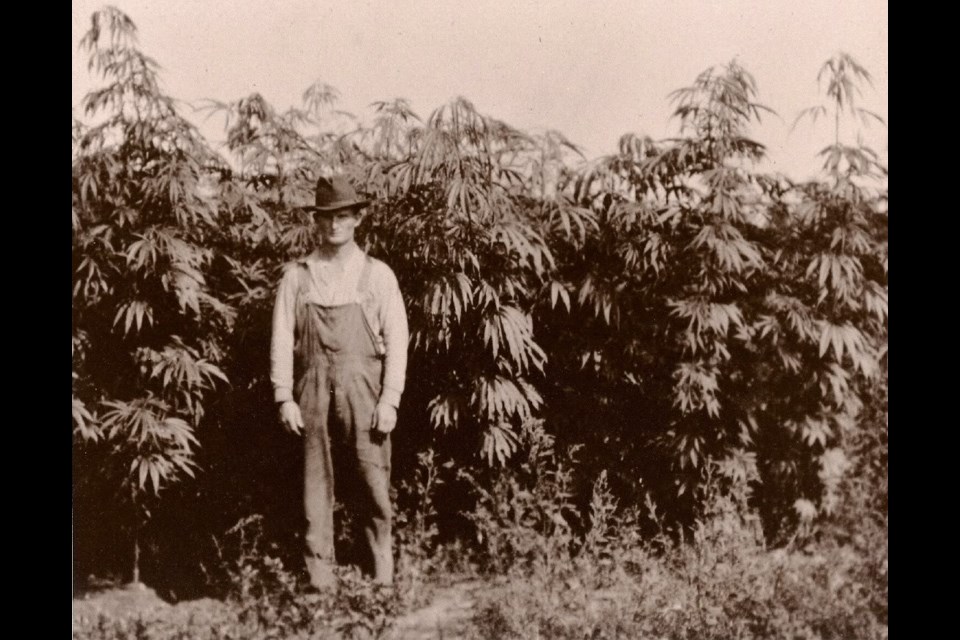It's marijuana legalization day! Whether you're for it or against it, Canadian society is about to change as we become one of the very few nations to outright allow recreational pot use.
Sudbury.com thought we'd look back at the history of cannabis – where it was first mentioned historically through to how it made its way to Canada, and how we have dealt with it as a nation.
According to a 2014 research paper by Barney Warf, a U.S. geography professor at Kansas University, burned cannabis seeds were found in burial mounds in Siberia dating back to 3000 B.C.E., although the plant has likely been around for much longer, possibly as far back as 12000 B.C.E.
Warf says both hemp (which doesn't get you high) and psychoactive cannabis (or sativa) were widely used in ancient China.
“The Chinese used hemp widely, including rope, clothing, sails, and bowstrings,” he writes. “(Sativa) was utilized as an anesthetic during surgery, including for the emperor Shen Nung in 2737 B.C.”
Over several centuries, the plant gradually made its way into India and central Asia, mostly likely by the Scythians, he writes, “a nomadic Indo-European group who participated in trade and warfare with Semitic peoples for a millennium.
“The Scythians likely carried it into southeast Russia and Ukraine, which they occupied for centuries.”
It was used in early Muslim societies – 700-1300 C.E. — since the Koran prohibited alcohol use and cannabis was considered a pain reliever. The word, 'hashish' was originally the Arabic word for cannabis.
“In many Arab communities, hashish ... was the favoured form of use, perhaps due to Koranic prohibitions against alcohol,” Warf writes. “Religious prohibitions were generally less strict concerning drugs that relieved pain.”
Cannabis sativa crossed into Africa around 700 C.E. Traders brought it to South America around 1600, gradually pushing into Mexico and the U.S. in the next 200 years or so, before spreading to Mexico, the U.S. and arriving in Canada around 1920.
Hemp, however, has long been a cash crop, Warf writes.
“As early as 1563, Queen Elizabeth decreed that landowners throughout the empire with 60 or more acres must grow hemp or face a fine,” he writes. “In 1606 in Nova Scotia (then Nova Francia), experimental cultivation was started by Louis Hebert, apothecary to Samuel de Champlain.”
When Britain took control of Canada in 1763, they sent “2,000 bushels of cannabis seeds to farmers in Quebec to grow,” according to an article on the Civilized.life website.
“The industry continued to thrive and came of age in Nova Scotia by the 1800s, but these positive views of the medicinal effects of marijuana changed by the 1920s, when all of Canada prohibited cannabis in 1923 by adding it to the Opium and Narcotic Drug Act.”
In the U.S., cannabis sativa made its way to coastal cities in the 1920s, “above all New Orleans, where it became a mainstay of jazz musicians,” Warf writes. “Circuits of jazz musicians carried the drug to St. Louis, Kansas City, Chicago, and Harlem, as noted by 1930s songs such as Cab Calloway’s 'That Funny Reefer Man,' Fats Waller’s 'Viper’s Drag,' and Benny Goodman’s 'Texas Tea Party.' American jazz, increasingly popular in Britain, also facilitated the trans-Atlantic diffusion of the drug.”
Temperance movements were powerful in the 1920s and 1930s, and cannabis was lumped in with the ban on acohol, he writes.
“Starting with Utah in 1915, 29 states outlawed the plant by 1931.”
Opponents claimed it induced wild, hallucinigenic and violent behaviour, a view expressed in the now classic 1936 film, "Reefer Madness."
“It depicted marijuana destroying the lives of adolescents, leading to murder, rape, and criminal insanity, and concluded it was more dangerous than heroin or opium,” Warf writes. “Marijuana posters typically portrayed a helpless, white female being seduced or overpowered by a Satan-like figure, often dark-skinned.”
It was legal again to grow hemp during the Second World War in the U.S., as part of a 'Hemp for Victory' campaign effort, but it was made illegal again when the war ended and, in 1951, the penalty of possession of cannabis was made the same as the penalty for heroin possession.
The 1960s counter-culture helped spread marijuana use, and it became a major symbol of the anti-Vietnam war movement. Laws gradually relaxed, with many countries moving toward a decriminalization regime.
A major milestone in Canada took place in 1996, when Terry Parker was arrested for growing and trafficking charges. He appealed to the Supreme Court of Canada, arguing that cannabis was the most effective way for him to control epileptic seizures.
In 2000, the court ruled Canada's pot laws were unconstitutional, and a year later, the first medicinal marijuana rules were approved in Canada.
A study in 2002 by the federal government examined the evolution of mairijuana use in Canada, and the conflict between those who wanted less retrictive rules, and those who viewed pot as dangerous as cocaine and herion.
By 2003, then Prime Minister Jean Chretien tabled legislation to decriminalize pot possession, but it was withdrawn after pressure from the U.S.
In 2013, the medicinal marijuana system in Canada expanded to include a slate of legal growers for medicinal use, which Canadians could access through approval of their doctor. And in 2015, Prime Minister Justin Trudeau was elected promising to legalize weed, setting today as the date.
